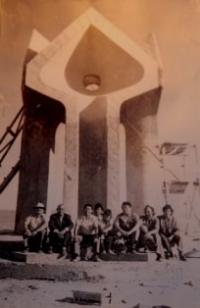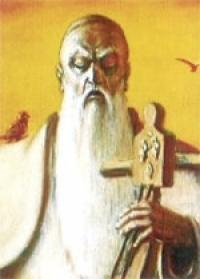You are here
Memorial Korkyt-Ata.


Architectural monuments Kyzylorda of area.
“No matter how you beautify a donkey – it won’t become a Tulpar, no matter now you dress a slave – he won’t become a Khan”
“Tulpar is a winged or swift horse in Turkic mythology”
“Khan is an originally Altaic and subsequently Central Asian title for a sovereign or military ruler”
Tours and excursions on the Kyzylorda region.
On the bank of Syr Darya river, in 1980 was built Korkyt Ata’s memorial, back in 1950s the legends say that there was a memorial of a creator of Kobyz, a singer,a composer, Akyn, a patron of poets and musicians Korkyt Ata. This monument is built of adobe bricks, inside the monument construction process imitates the construction of a Yurt house which reproduces the essential features of adobe construction of mausoleums of the ancient delta of Syr Darya river.
The mausoleum was built over a grave of an original composer-baksy (Korkyt Ata), who was an outstanding individual of his time, Korkyt represents the era of Turkic social disentigration and separation into different uluses (tribes). Turks who once owned the steeps, by the will of destiny were cut off from their main roots.
During the years of his life from the end of VIII century until the beginning of IX century most of Dasht-i-Kipchak people didn’t perceive Islam, the religion has only started to spread all over the steeps. Like any other religion at the begging Islam couldn’t be entirely perceived by people that time.
Korkyt was Tengry man, which means he was ethnic pagan, that’s why he couldn’t perceive new religion. Among Nomadic people Islam was spread by force arms. Korkyt’s rebellion against death, was not at the action of self-preservation or saving his own soul, but it was the resistance against the coming of Islam," - says a major researcher, writer Tarakty Akseleu.
Korkyt was a thinker who foresaw the future, he was a historical person. He was not a batyr, nor he was a warrior, but his melodies, kui and songs that he left to the people, which we can still hear today give people a strong sense of patriotism. Once in his dream Korkyt saw angels who told him to do one important thing: "Wrap a wooden instrument with camel leather and make a string from a horse hair."
After completing all this, Korkyt created a wonderful musical instrument which was called in honor of creator "Kobyz Korkyt." Korkyt’s birth is also associated with miracles and myths. Just before his birth there was an eclipse of the sun so it became quite dark, the storm started and it rained, thunder and lightning flashed. People were very scared. But after Korkyt was born, natural disaster storm was over, everything calmed down and Sun was shining in the clean sky.
"He came into this world at a time when everyone was scared, he scared all of usl, so let's call him Korkyt" - decided people. Sh.Valihanov with Potanin explained that the word "Korkyt" characterizes the life of a mankind. Legends and stories abouti Korkyt are common among Turkic peoples, especially among the Kazakhs. Korkyt believed that the most important thing about a man is moral, the most dangerous thing for a man is to lose one’s moral principles.
"The book Korkyt ata" – is a written monument of an epic genre of a tribe Ogyz which later was included in the Turkic people culture. The book tells us about the life of Ogyz tibes,the book is generally written in Ogyz-Kipchak language.There are two preserved copies of a book written in Arabic alphabet (Dresden, the Vatican). Korkyt is known to the world, especcialy to Turkic people.
There is no accurate data about his age, some believe that he died at the age of 93, others think it was 193, while some individuals bring his age up to 400.
Authority
«Monuments of the Central Asia». The author of M. Khahsimov. Publishing house, Saga, 2001. Samarkand. «Masterpieces of the Central Asia», Tashkent, Publishing house Sanat, 2004. www.farsah.kz. «Ancient Kazakhstan» Arias, Saki, Hun, Turkis. The children's encyclopedia of Kazakhstan. Almaty, 2007, publishing house Aruna. Medoev A.G., «Engravings on rocks.Sary-Arka, Mangyshlak», Almaty, Zhalyn, 1979. Marikovskij P.I. «Figures on rocks of Southern and Central areas of Kazakhstan», Almaty, Tuganolke, 2004
Photos by
Alexander Petrov.







